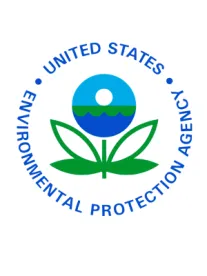We appreciate the efforts being made by the U.S. Environmental Protection Agency (EPA) to upgrade and update several of the category documents in the New Chemicals Program, encourage EPA’s continued activity in this area, and encourage EPA to engage in a broader effort to solicit public comments. We recognize the critical role that the new chemicals categories have played in the implementation of the New Chemicals Program. Over time, however, we believe there is a need to develop and refine these documents further to inform more effectively decisions in the context of the changed requirements under Section 5 and the new Section 26 science requirements under the amended Toxic Substances Control Act (TSCA).
Prior to the Frank R. Lautenberg Chemical Safety for the 21st Century Act (Lautenberg), the new chemicals categories were regarded primarily as a risk management tool to alert submitters to classes of new chemicals that were identified by EPA as being of concern. The write-ups for the most part consist of generic descriptions of potential environmental and/or human health hazards. The substance of these categories is closer to a structural alert than to a category like those developed in the Organization for Economic Cooperation and Development (OECD) program. The New Chemicals Program category documents do not provide the kind of understanding needed to inform submitters of read-across and hazard characterization issues that should be considered in submitting relevant information on a new chemical. This difference between the (traditional) new chemicals categories and categories developed under the OECD grouping programs is not always apparent to premanufacture notification (PMN) submitters. The latter categories are better models but require additional effort to design and build and the recent drafts hint at movement in this direction. Many of the new chemicals category documents are also quite dated, particularly with regard to human health issues, and are in need of an update. This could be done over time and provide opportunities for public review and commenting, and peer review as indicated.
Given the changes in new TSCA, current versions of the new chemicals category documents do not provide the kind of understanding needed to inform submitters of category definitions and boundaries, read-across, and hazard/exposure/risk characterization issues and information needs that should be considered in submitting relevant information on new chemicals. The New Chemicals Program category documents also need to evolve to better align with the sound science provisions in Section 26. A goal of the New Chemicals Program could be to develop new chemical categories that are functionally equivalent to those developed under the OECD’s category guidance. We note that the European Union’s (EU) Registration, Evaluation, Authorization and Restriction of Chemicals (REACH) regulation also uses categories based on the OECD guidance.
EPA recently shared with us four new chemicals categories with a focus on human health: Polymer Lung Overload; Polycationic Substances (Cationic Binding); Waterproofing Agents; and General Surfactants, and we provided comments on these chemical categories. Our comments attempt to examine the category documents under the guidance of the Section 26 science standards. A topic that we feel the need to highlight is the inclusion of tiered testing strategies in these documents. The tiered testing approach illustrated in the recent draft categories does not conform to the basic principle of relating what is learned from each testing tier to what is eventually needed to determine category membership and to meet a regulatory requirement. The tiering strategy needs to include “exit” decision points for each testing tier based on information requirements for the category, i.e., individual test outcomes need to consider the context of what we know about the toxicity and characteristics of category members, exposure considerations, and associated risk management. Inadequate clarity regarding the purpose of a tiered strategy could inadvertently lead to it being regarded as the functional equivalent of a base set for a class of chemicals, a result no one would intend.


 />i
/>i

